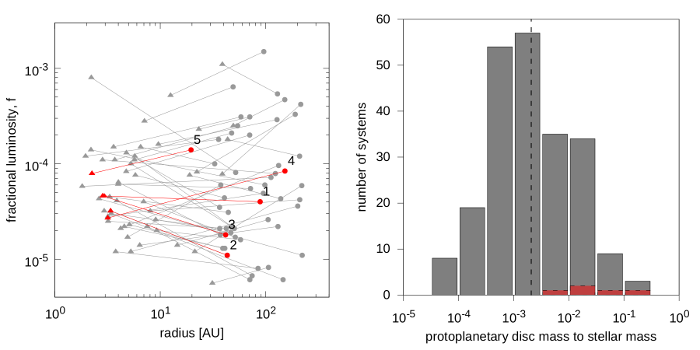
Many debris discs reveal a two-component structure, including cold dust associated with Kuiper-belt analogues and warm dust at a few au of unknown origin. We investigated if this warm dust could stem from collisionally evolving asteroid belt analogues and, if so, how the progenitor protoplanetary discs must have looked like to produce the debris discs currently observed. We find that the warm dust in the vast majority of systems (98%; shown in grey) can indeed derive from "asteroid belts", while the remaining systems (2%; shown in red) require either cometary sources of dust, recent major collisions, or planetary system instabilities.
(Left) Our sample of debris discs in the radius − dust luminosity plane. Warm and cold components within the same systems are connected.
(Right) Distribution of initial protoplanetary disc masses whose collisional evolution could have produced the debris discs as they are now.
Details: https://arxiv.org/abs/1702.05966